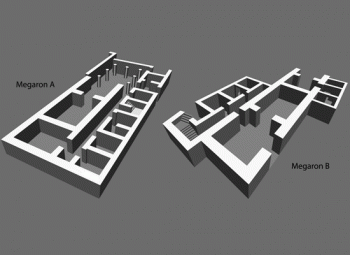American Journal of Archaeology | The Journal of the Archaeological Institute of America
You are here
Mycenaean Dimini in Context: Investigating Regional Variability and Socioeconomic Complexities in Late Bronze Age Greece
July 2010 (114.3)
Mycenaean Dimini in Context: Investigating Regional Variability and Socioeconomic Complexities in Late Bronze Age Greece
Recent excavations at the Mycenaean town of Dimini in the Bay of Volos in Thessaly have led to the interpretation of this site by its excavator as the regional “palatial” administrative center. This article discusses the available archaeological evidence from all three known Mycenaean settlements in the Bay of Volos (Dimini, Kastro, and Pefkakia) and considers aspects of settlement pattern, architecture, artifact distribution, burial practices, and craft specialization in those settlements. In the analysis of the data, notions of different theoretical approaches are employed, such as heterarchy, power-sharing strategies, and factionalism, in addition to the traditional neo-evolutionary approach. The varied analytical perspectives of these interpretative models allow for a more complete understanding of the political organization and social change in the Bay of Volos during the Late Bronze Age and can expose regional variability in the Mycenaean world. It is argued that, based on present data, there is not sufficient archaeological evidence to suggest a central place hierarchy in the Bay of Volos. Ideological, economic, and political power at both settlement and regional level was not concentrated in one source, as the conventional “palatial” model proposes, but was shared across different groups and sectors of society.
By Panagiota A. Pantou
American Journal of Archaeology Vol. 114, No. 3 (July 2010), pp. 381–401
DOI: 10.3764/aja.114.3.381
© 2010 Archaeological Institute of America


